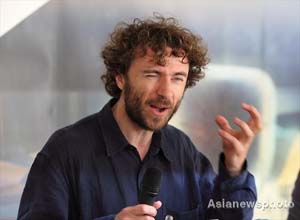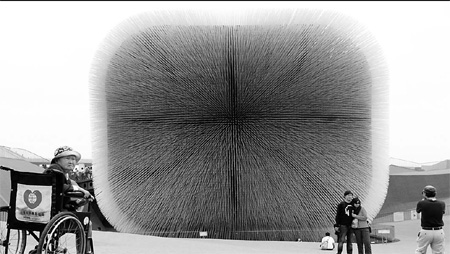

Expo presents ideas on how to build better places to live, architect says
SHANGHAI - The designer of the United Kingdom Pavilion hopes his spiky "Seed Cathedral" and the surrounding park encourage the builders of China's megacities to learn lessons from places like London without seeing them as blueprints to copy.
|
 Thomas Heatherwick, designer of the United Kingdom Pavilion |
Heatherwick was referring in part to London's integration of nature into its urban engineering and its famous Royal Kew Gardens, the world's first botanical garden. Kew Gardens is now forging ahead with its ambitious Millennium Seed Bank project, an international conservation scheme in which China's 44-hectare Kunming Botanical Gardens in Yunnan province is a participant.
The project has already banked more than 1 billion seeds in underground vaults to guard against their extinction.
"In China, new cities get built overnight, almost. And in those possibilities are the chance to really learn from the lessons of older cities like London, and the things that maybe haven't worked out so well in cities elsewhere in the world," said the London-born designer, who has a reputation for pushing the envelope with his buildings and sculptures, many of which have a spiky theme.
 Tourists pose outside the United Kingdom Pavilion in the Expo Garden on Tuesday. Gao Erqiang / China Daily |
His reputation took a nosedive when some of the spikes fell off his "B for the Bang" sculpture in Manchester in 2005, which looks like the quills of a porcupine and commemorates the Commonwealth Games held in the city. However, with all the press the UK Pavilion is now getting, nobody is laughing at his ideas these days.
|
|
"When I told my friends about the idea of using seeds, they were like, 'What? Why?'" he said. "In the UK, seeds are something you see in packets at gardening centers when you go shopping for a new patio on the weekend.
"But one seed in the palm of your hand could be the reason why your grandmother lives 10 years longer. So something as unimpressive as a seed can actually be very significant."
Not that the seeds inside his "cathedral" are unimpressive. Each is embedded with a microscopic LED light that, along with the sunlight funneled through the rods, lends the tiny pavilion's interior an eerie glow and helps reduce its carbon footprint.
While the tiny interior is notable for its wavy walls, the outside ingeniously incorporates an optical illusion of the Union Jack, the British flag, in the form of crossing black lines that follow visitors as they circumnavigate the building. One member of Heatherwick's team took four months to perfect that alone; another man was employed because he was skinny enough to fit between the spikes to position them correctly.
While London is a far-from-perfect model for cities like Shanghai to follow, with its snarled traffic and garbage spilling onto the streets, it remains a standout example of how to green a city of more than 10 million people, including tourists. London incorporated communal garden squares into its post-war housing estates, gave some residents private plots on which to grow fruit and vegetables, and limited the density of housing on green belts like Hampstead Heath. The first World's Fair was held in 1851 at London's famous Hyde Park, a 142-hectare space in the heart of the city.
Heatherwick said China needs to balance its ability to build cities faster than anyone else with respect for its cultural identity, as its people swamp the cities at an alarming rate. In world terms, the country has experienced an unprecedented rate of urbanization in the last decade, with its urban population expected to surpass 50 percent, or 700 million people, later this year.
"There's an incredible creativity and energy in China, and impatience. But I think that's where my worry is, the impatience," he said. "You need to make spaces that work economically, but also ones that are more particular and especially Chinese, and unique to China, rather than copying other cities in China, and other cities in the world."
Beijing's "Bird's Nest" National Stadium, one of the two centerpieces of the 2008 Olympic Games, and a building that references Chinese people's penchant for exotic food, is "one of the most important buildings in the last 20 years," he said.
